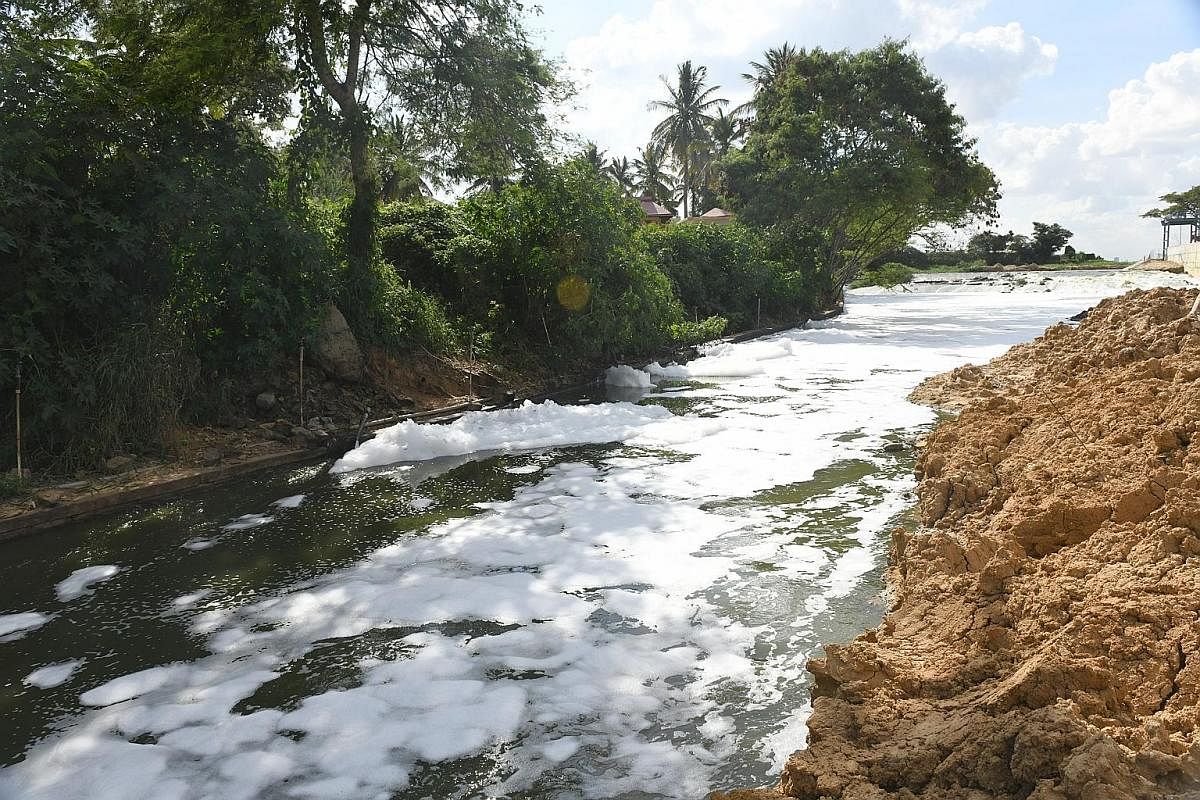Work being done to clean up city's toxic lakes

BENGALURU • Once known as a city of lakes, Bengaluru is now getting noticed for how polluted they are. One of them, Bellandur lake, has become so dirty that it periodically catches fire.
Experts warn that while other lakes in Bengaluru may not announce their pollution as spectacularly, it can be indirectly gauged, for example, by observing the high levels of heavy metals in crops grown using their waters.
Dr Priyanka Jamwal, 38, a researcher at the Ashoka Trust for Research in Ecology and the Environment (Atree) in Bengaluru, explained that the lakes in the city are actually man-made structures that were built for the specific purpose of storing water.
She said that as the city grew, urban planners decided to source water from the Cauvery river nearly 100km away - and this was one of the root causes of the pollution contaminating the city's water bodies.
"When you import such a large quantity of water, where does the waste water go? Because after using this water, waste water is just directly let out into the channels."
Dr Jamwal said Bengaluru was essentially built on top of three valleys, namely the Hebbal, Koramangala-Challaghatta and Vrishabhavathi.

She added that traditionally, when water flowed into reservoirs situated higher up in the valleys, the excess would be channelled through storm water drains to the next reservoir in the series. However, with so much sewage flowing into each reservoir, the excess was now overflowing and contaminating the next lake in the series.
The municipal authorities attempted to solve the problem by building bypass channels to ensure that sewage would not cascade from lake to lake. However, what this did was channel all the waste to the last lakes in the series, one of which is Bellandur.
The toxic, foaming water has health implications, said Dr Jamwal, who pointed to a study she conducted in the Vrishabhavathi Valley, where the final lake in the series of reservoirs is the Byramangala.
"This lake's water is used by villages for irrigation purposes and it contains heavy metals and other stuff because there are industrial areas here."
The water is so toxic that even milk produced in the area contains heavy metals.
The rapid expansion of Bengaluru in recent decades has also had a disastrous effect on its lakes, with unscrupulous builders, motivated by skyrocketing real estate prices, building over the city's water bodies. They often connive with the local authorities to do this and when it rains in Bengaluru, floods often follow as the water has nowhere to go.
Prominent Bengaluru water activist Vishwanath Srikantaiah said every growing city experiences problems with water quality during its life cycle and that work is under way to restore the lakes.
"We are at a trough in that process and it's a very bad time. But there are signs of many of the lakes being revived with citizen participation. These could be examples for other lakes to follow and for other cities in India to follow," he said.
Another Atree fellow, Dr Veena Srinivasan, 44, agreed that it is not too late for Bengaluru's lakes.
"I think it's not an irreversible problem because that much of sewage is generated every day. So in a sense if you think about the lakes, they probably have 60-80 days' worth of storage.
"That's how many days of equivalent sewage the lakes hold, which means that if you started treating every last drop of sewage in the city tomorrow, it would take only a few months for the lakes to get cleared out," she explained.
"It's not like there will be a legacy issue that stays for 50 years."
Arvind Jayaram
Join ST's Telegram channel and get the latest breaking news delivered to you.
A version of this article appeared in the print edition of The Sunday Times on October 28, 2018, with the headline Work being done to clean up city's toxic lakes. Subscribe

